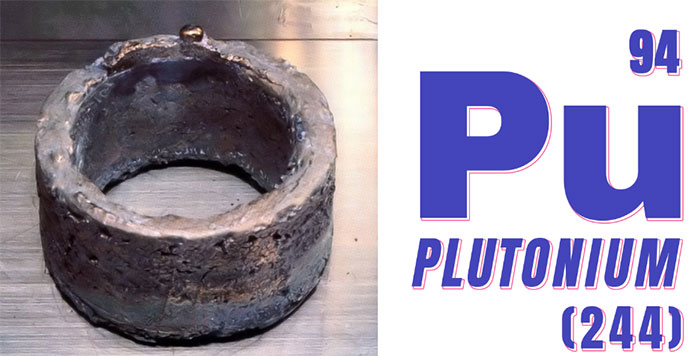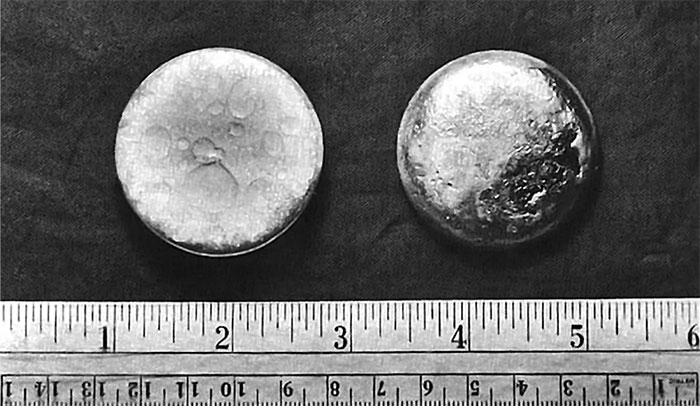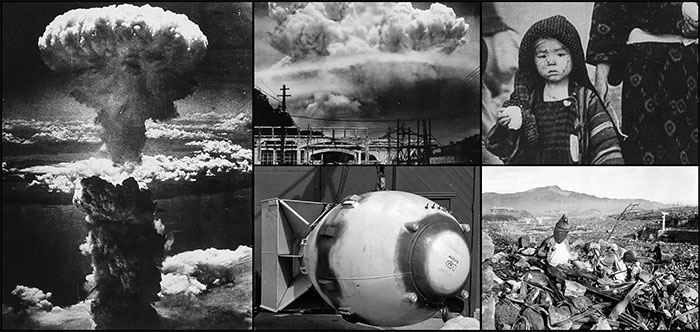Rare Element Plutonium - What Do You Know About It?
It is element 94 in the periodic table (Pu) and is one of the most dangerous elements on Earth .
Plutonium is very rare, so rare that for many years we could not find it in the natural environment , the main source of plutonium is the product from nuclear reactors.
Plutonium is radioactive , it has a silvery sheen and tarnishes when exposed to air. Queen Elizabeth II held a piece of plutonium during a visit to the British atomic energy research facility at Harwell in 1957, it was warm to the touch and did not cause any visible pain or damage. Interestingly, even if you try to taste or eat it with your mouth, plutonium does not actually cause immediate harm, but this is not recommended.


Plutonium is radioactive.
Plutonium is a byproduct of the splitting of uranium atoms in a nuclear reactor, and is too large to penetrate our skin directly. However, the danger begins to appear when humans intervene.
An isotope of plutonium called plutonium-239 is fissile , and the United Nations lists it as one of only two radioactive isotopes used to make atomic bombs . When a neutron hits a plutonium-239 atom, it causes fission, releasing gamma rays and more neutrons. When those 'newborn' neutrons hit other plutonium-239 atoms, the same thing happens over and over again… releasing a huge amount of energy. Under the right conditions, the energy from nuclear fission can be harnessed for many good purposes for humanity. The heat released can boil water into steam, it can turn turbines, and a third of the energy produced by nuclear power plants comes from plutonium.
In the past, for the purpose of war, this element was used as a weapon of mass destruction. In 1945, the United States created a bomb containing only a small ball of plutonium and dropped it on the Japanese city of Nagasaki, causing a tragic and haunting tragedy that haunts us to this day.

Fissile plutonium-239 is one of two radioactive isotopes used to make atomic bombs.
According to the 17-nation International Panel on Fissile Materials (IPFM) , which was established in 2006, there are currently an estimated 140 tonnes of weapons-grade plutonium in the world. It forms part of the so-called 'nuclear threat' in countries such as the US, UK and Russia. You only need a bowling ball-sized amount of plutonium to make the core of an atomic bomb, but getting enough raw material is not easy. Plutonium doesn't actually exist in much of nature; it only comes from nuclear reactors, and most of it is man-made. However, there is one place in Africa, Oklo in Gabon, where the conditions are ideal for the element to form naturally.
Plutonium is one of the 15 actinide elements.

A radioisotope thermoelectric generator (RTG) is a nuclear battery that captures heat from decaying plutonium and converts it into electricity using wires called thermocouples. When one end of the thermocouple gets hot, current starts to flow. RTGs are used to carry electricity to remote places, from lighthouses on dangerous coastlines to probes in deep space. But you can't just use any old radioactive element to make them, NASA has a very strict list of criteria for nuclear batteries. The fuel has to be safe in the event of an accident, it can't give off too much beta, gamma or neutron radiation because they can't interfere with equipment. It has to be as stable as possible because you don't want it to explode unexpectedly, and it also needs to have a long half-life because batteries can't be replaced in space.

In 1940, scientists at the Berkeley Radiation Laboratory experimented with uranium, firing heavy hydrogen atoms at the element to see what would happen. Uranium is typically radioactive, and the bombardment caused it to split, releasing another radioactive element - neptunium . However, this element was unstable, and it decayed into a previously unknown radioactive element. Following the 'planets' theme, the scientists named it plutonium. The nuclear weapons potential was promising, and within two years, top-secret plutonium production had begun at the Metallurgical Laboratory in Chicago.

Some applications of Plutonium




- Discover the secret of Plutonium element
- Listening to an expert explaining that 'rare earth is not as rare as the name'
- Composition and effects of rare earth
- Confirm the existence of the 117th chemical element
- Conceptual design of large plutonium nuclear reactor
- Harmful effects of plutonium radioactivity
- The Russians have created a rare element
- Scientists have just created a stable helium compound
- Things you do not know about rare earth
- The element has a half-life of 1 billion times the life of the universe
- The chemical is dubbed 'the element of the devil'.
- Decoding Promethium: The mysterious man-made element from the Manhattan Project
 'Fine laughs' - Scary and painful torture in ancient times
'Fine laughs' - Scary and painful torture in ancient times The sequence of numbers 142857 of the Egyptian pyramids is known as the strangest number in the world - Why?
The sequence of numbers 142857 of the Egyptian pyramids is known as the strangest number in the world - Why? History of the iron
History of the iron What is alum?
What is alum? Mistakes make scientists pay with life
Mistakes make scientists pay with life  Discover the secret of Plutonium element
Discover the secret of Plutonium element  Plutonium: The twin brother of Uranium
Plutonium: The twin brother of Uranium  Space exploration with 19th-century motives
Space exploration with 19th-century motives  The most toxic nuclear facility in the United States
The most toxic nuclear facility in the United States  Harmful effects of plutonium radioactivity
Harmful effects of plutonium radioactivity 